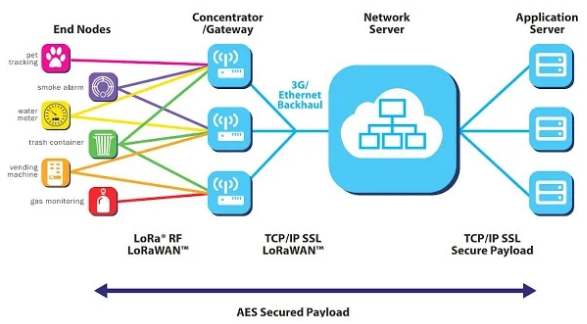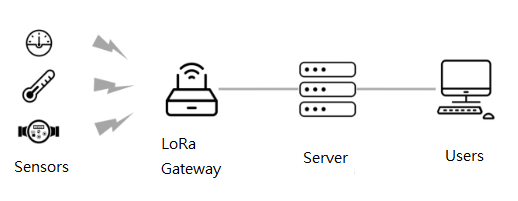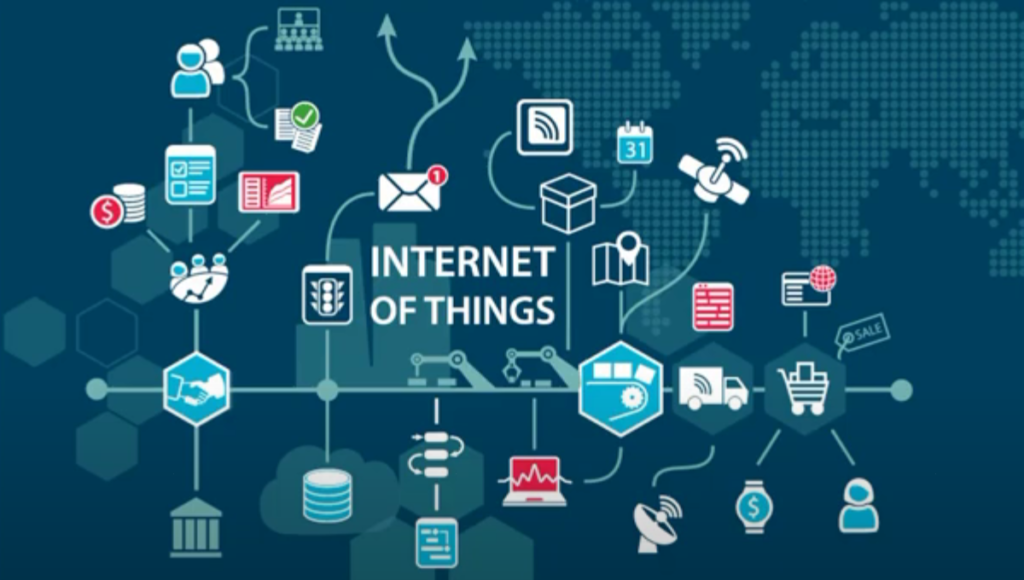IoT (the Internet of Things) is a network of physical devices.
IoT physical devices are embedded with sensors and actuators that communicate via wired or wireless communication techniques which allows the sensors and actuators to be digitally monitored or controlled locally or remotely.
Sensors or actuators can connect to cloud platforms in the Internet and other devices through a host of network protocols. This enables communication between devices which can transfer data to one another without human intervention.
Sensor communication technique
Anneal Technology Inc. provides various sensors and actuators which communicate via (1) MQTT/WiFi, (2) WiFi and (3) LoRa technology.
Networking architecture for each technology will be different and will be described in the following sections. However, method (2) and method (3) can be used at the same time for a more complicated software design. Method (1) is a standalone approach which uses MQTT topics instead of IP address for communicaiton.
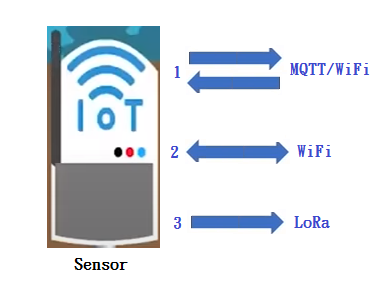
(1) MQTT Technique
MQTT is a lightweight publish/subscribe messaging transport that is ideal for connecting remote devices with a small code footprint and minimal network bandwidth.
IoT devices (sensors or actuators) publish/subscribe with a unique topic through the Internet to the MQTT broker which relays the messages to the Smart phone, local MQTT server or Remote MQTT server.
Users can use a Smart phone to receive or transmit MQTT messages as a simple mechanism for a very cost effective IoT system (LHS Figure). Users can deploy local or remote MQTT servers to receive/transmit messages and process/analyse the messages for a detailed view of the IoT system. The remote MQTT server with high processing power can manage IoT devices deployed over many different sites (RHS Figure).
Fixed IP address for network side is not needed which simplify the burden to configure the network IP address. MQTT only uses the unique topic for each measured value in the sensor or each controlled item in the actuator. Uniqueness of Topic is very important in MQTT messaging.
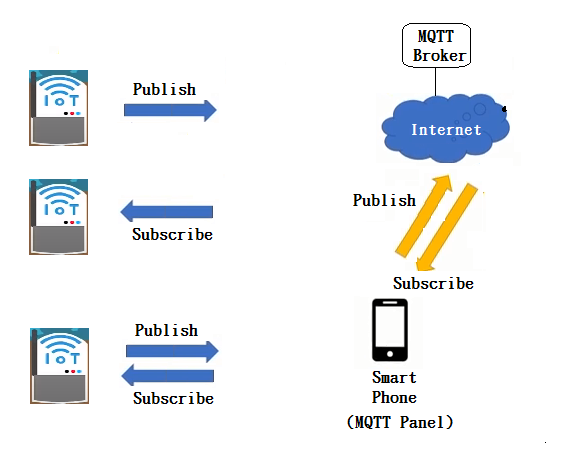
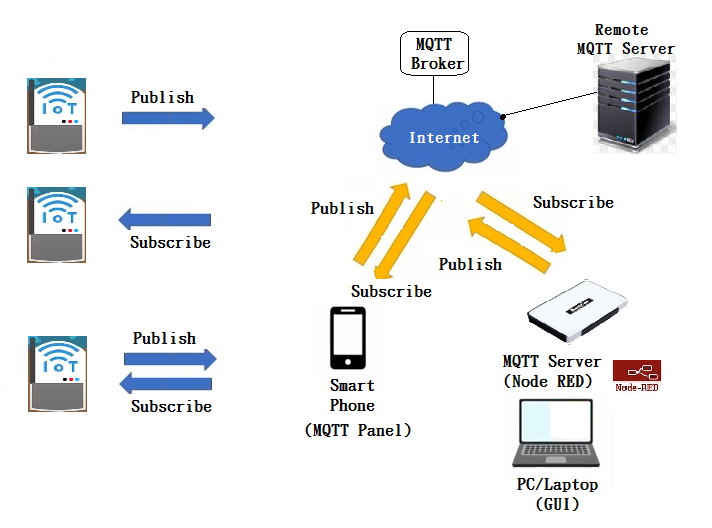
(2) Wifi Technique
WiFi based on the IEEE 802.11 standards, is a family of wireless network protocols which are commonly used for local area networking of devices and the Internet access.
IoT devices based on WiFi transmit measured values through WiFi AP router to the MQTT server for further processing. IoT devices can also receive controlled messages for the MQTT server. The IoT WiFi devices and server are the major components in a private monitor/control network system.
The messages processed in the MQTT server can be accessed by a remote monitor when VPN technique is designed in the server. A secure link can be established between the remote monitor and the MQTT server via VPN to retrieve the processed information at any time.
Remote monitors can be Smart phones or Windows PC/Laptop. Alarms or abnormal status can be generated and reported automatically to alert the users.
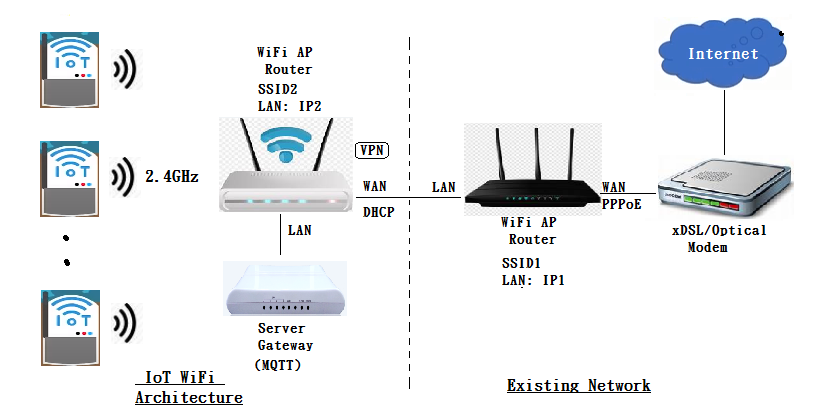
(3) LoRa Technique
LoRa (Long Range) is a physical proprietary radio communication technique which is based on spread spectrum modulation techniques derived from chirp spread spectrum (CSS) technology. LoRa enables long-range low bit data rate transmissions with low power consumption for un-licensed bands: 433 MHz, 868 MHz, 915 MHz and 923 MHz.
LoRa sensors send messages to LoRa Gateway which relays the messages via WiFi AP router to the MQTT server for data processing. LoRa devices, LoRa Gateway and MQTT server constitue a private sensor monitoring system.
The messages processed in the MQTT server can be accessed by a remote monitor when VPN technique is designed in the server. A secure link can be established between the remote monitor and the MQTT server via VPN to retrieve the processed information at any time.
Remote monitors can be Smart phones or Windows PC/Laptop. Alarms or abnormal status can be generated and reported automatically to alert the users.
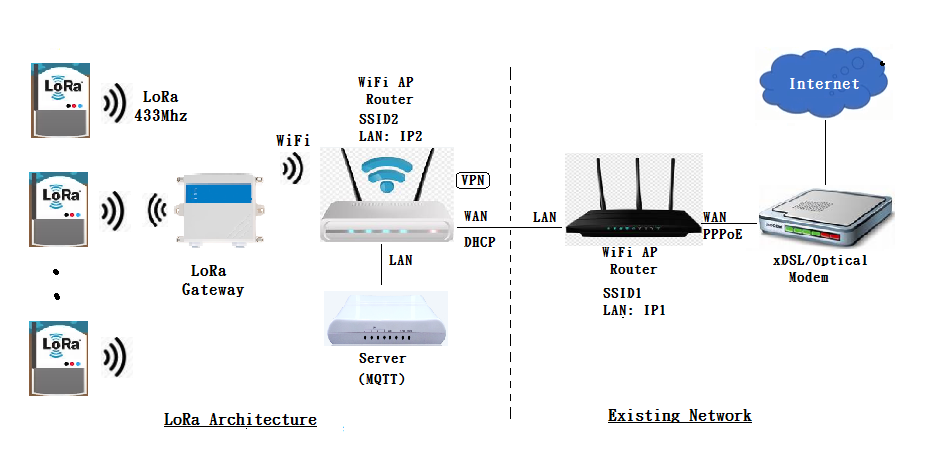
(4) WiFi and LoRa
LoRa and WiFi devices can be used in the monitor/control private system.
The MQTT server needs to accommodate messages from both the WiFi and the LoRa devices.
Software will be more complicate than the cases in (2) and (3). However, the working principles are similar to the cases in (2) and (3).
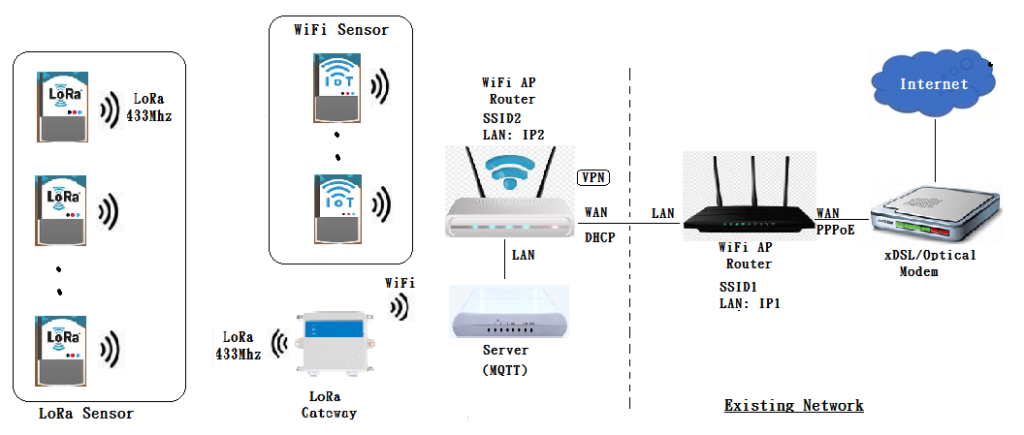
Sensor category
Anneal Technology Inc. provides IoT devices in the following categories:
(1) Power Energy Monitor
(2) Air Quality Monitor
(3) Gas Detection Monitor
(4) Digital I/O Device
(5) Analog I/O Device
(6) Accessories
Gateway and server
Gateway and Server can be classified as follows:
(1) LoRa Gateway
(2) MQTT Server
(3) LoRa Repeater
LoRa Technology
LoRa (Long Range) is a long range and low power consumption wireless technology designed for unlicenced bands: 433, 868 and 915 MHz. LoRa products can be designed based on open LoRaWAN protocol for private networks, the major equipment consist of (1) End Point devices – Sensors/actuators, (2) Gateway, and (3) Server for bi-directional data communications in the Internet of Things (IoT) networks.
LoRa devices and the open LoRaWAN® protocol enable smart IoT applications that can solve some of the problems: power/energy management, natural resource monitor, pollution control/monitor, disaster prevention, etc. We embrace LoRa technology to provide Private LoRa Platform products for our customers.
LoRa provides an alternative means to complement the works for (1) wired RS-485 networks in the building, and (2) lack of WiFi coverage. The major advantage is that the scale of wiring is greatly minimized by the LoRa technology. Installations become easy, and human labor is saved, and at the same time, the maintenace becomes simple.
